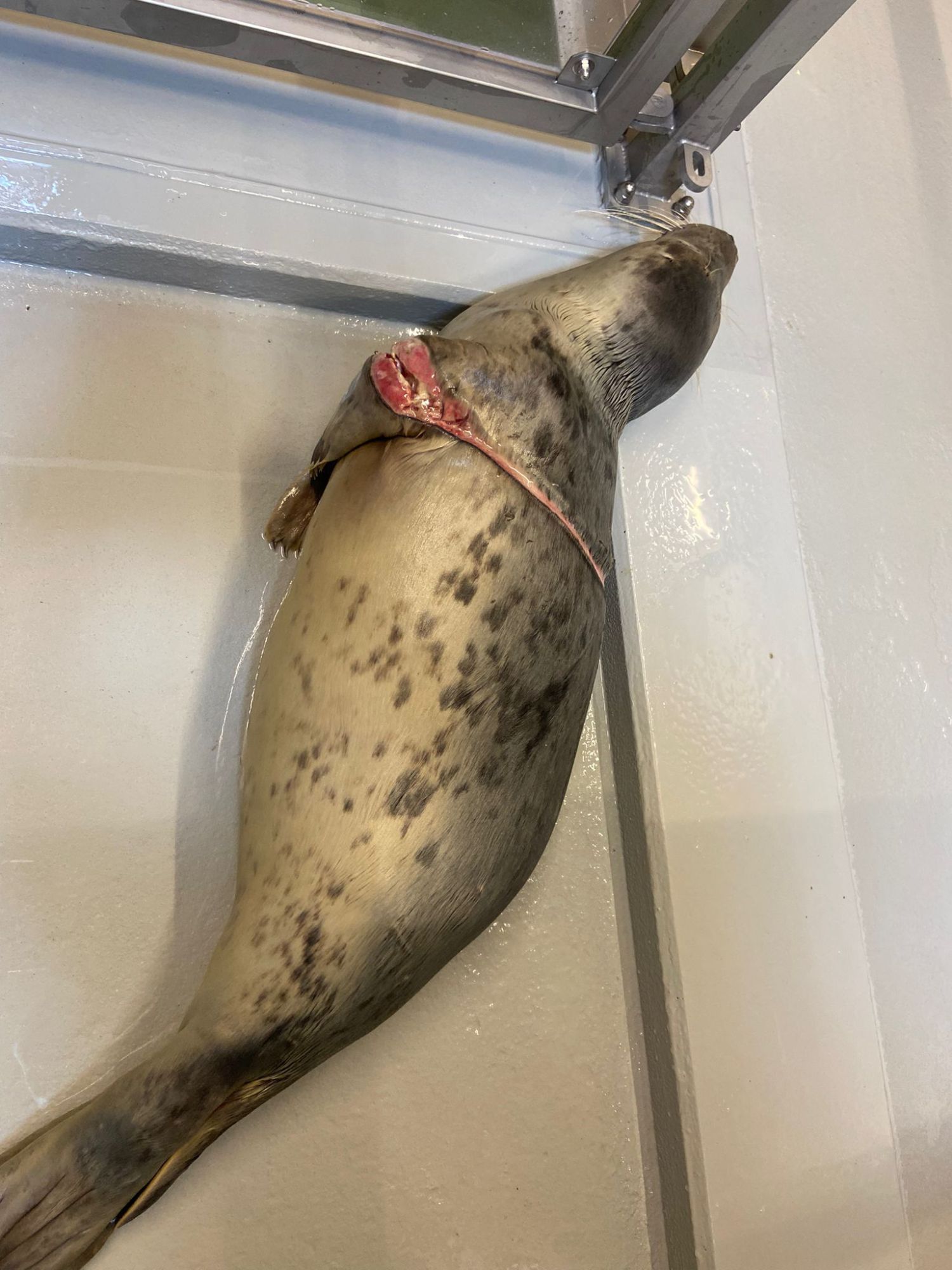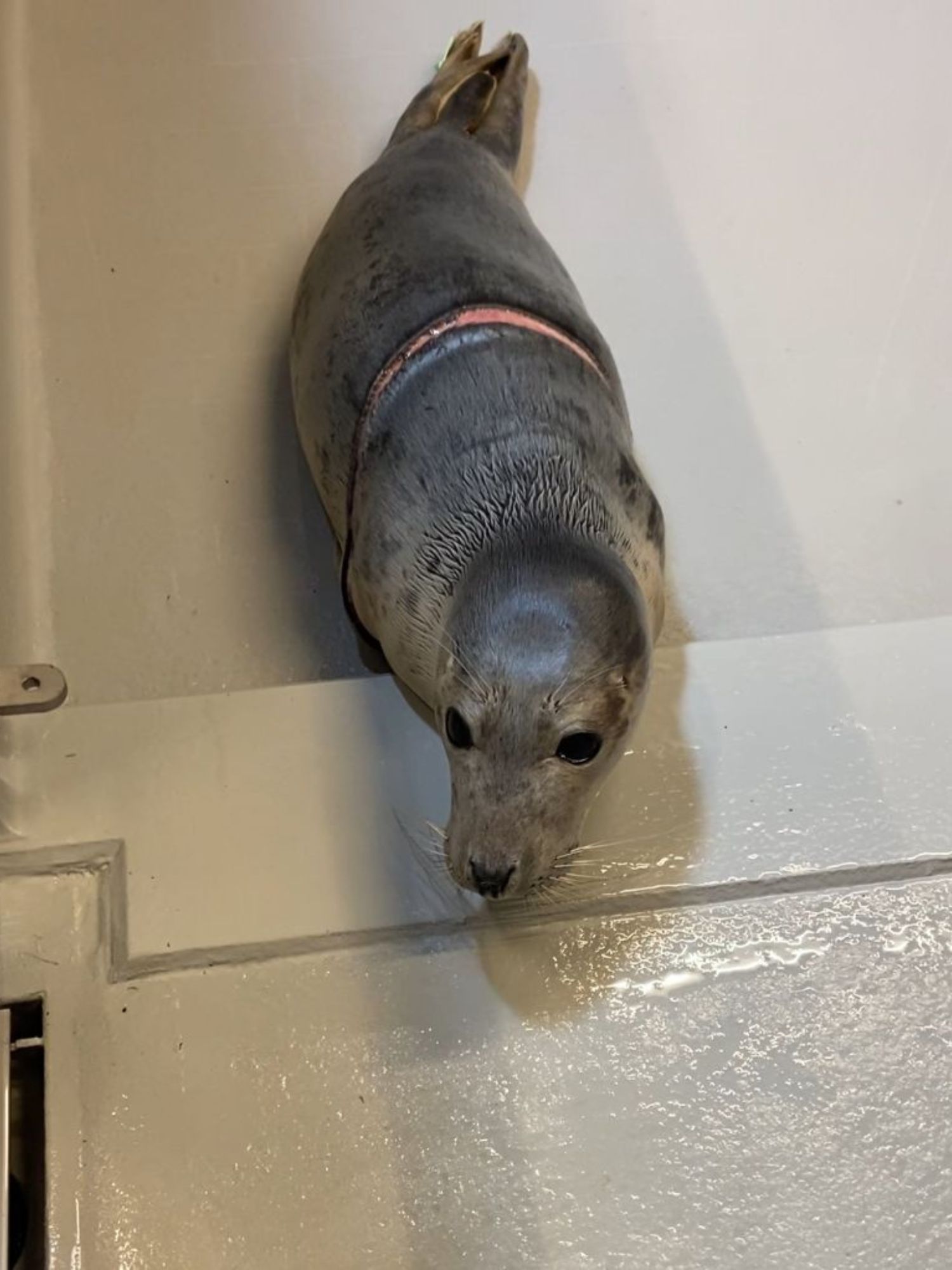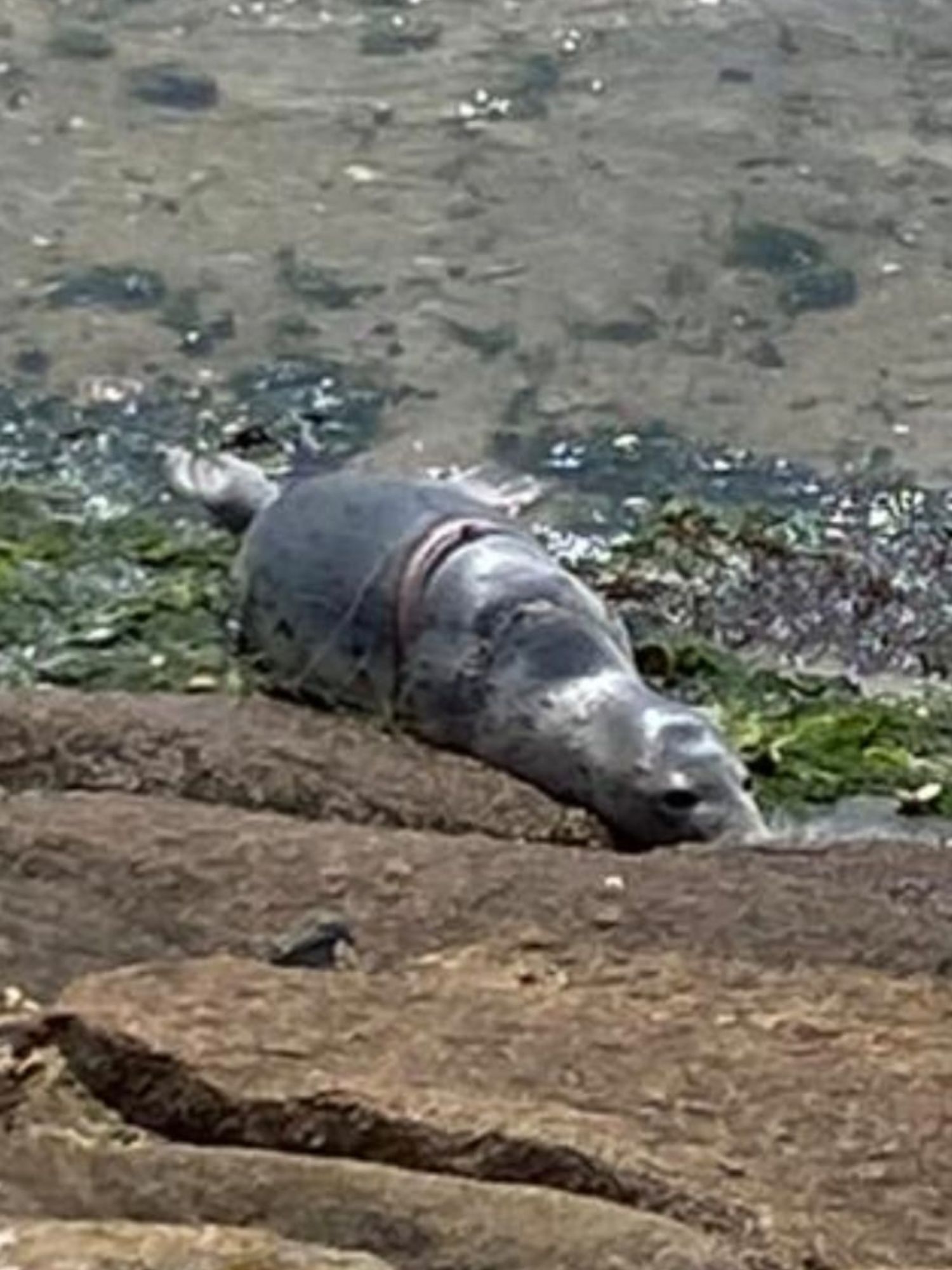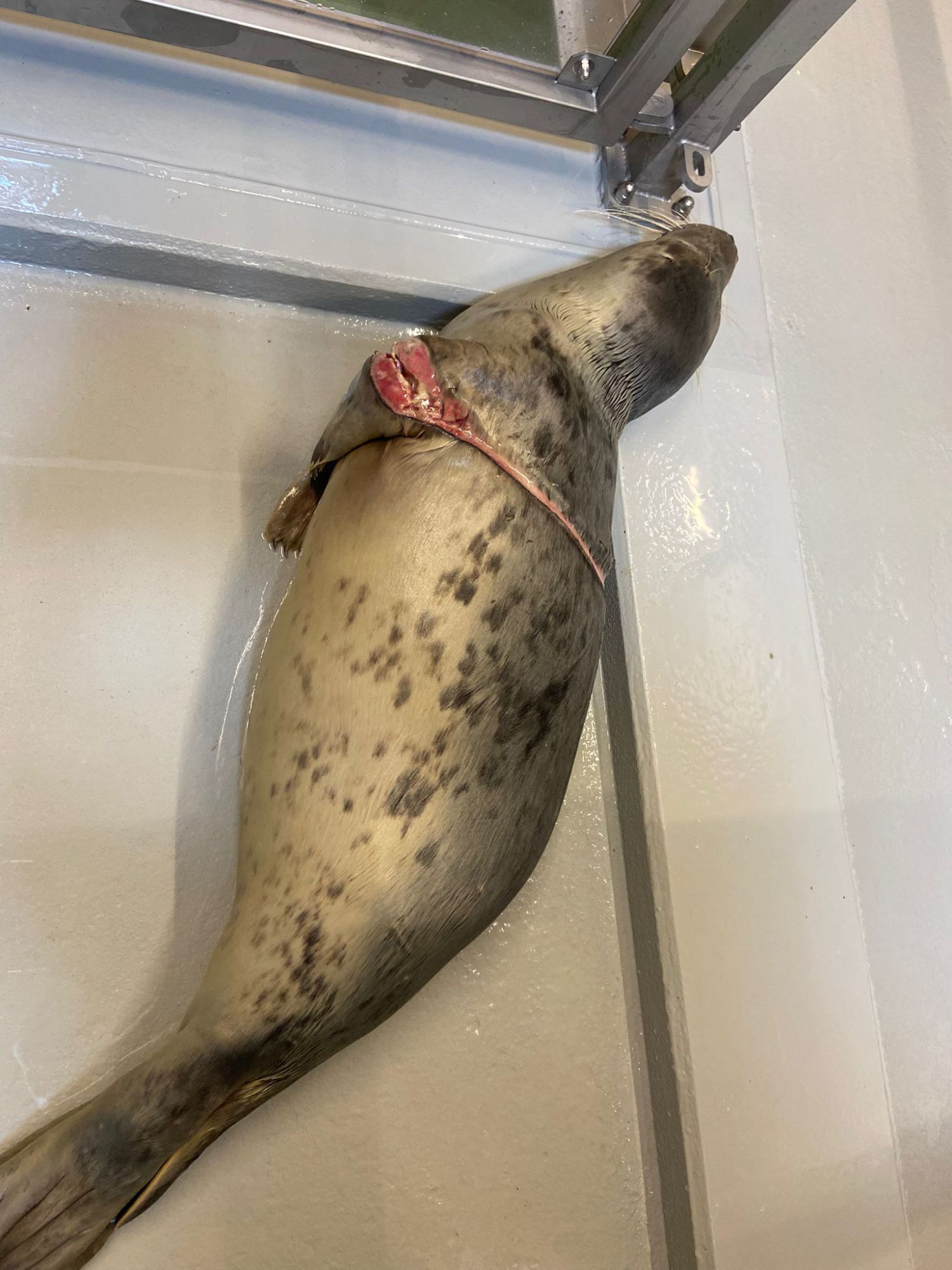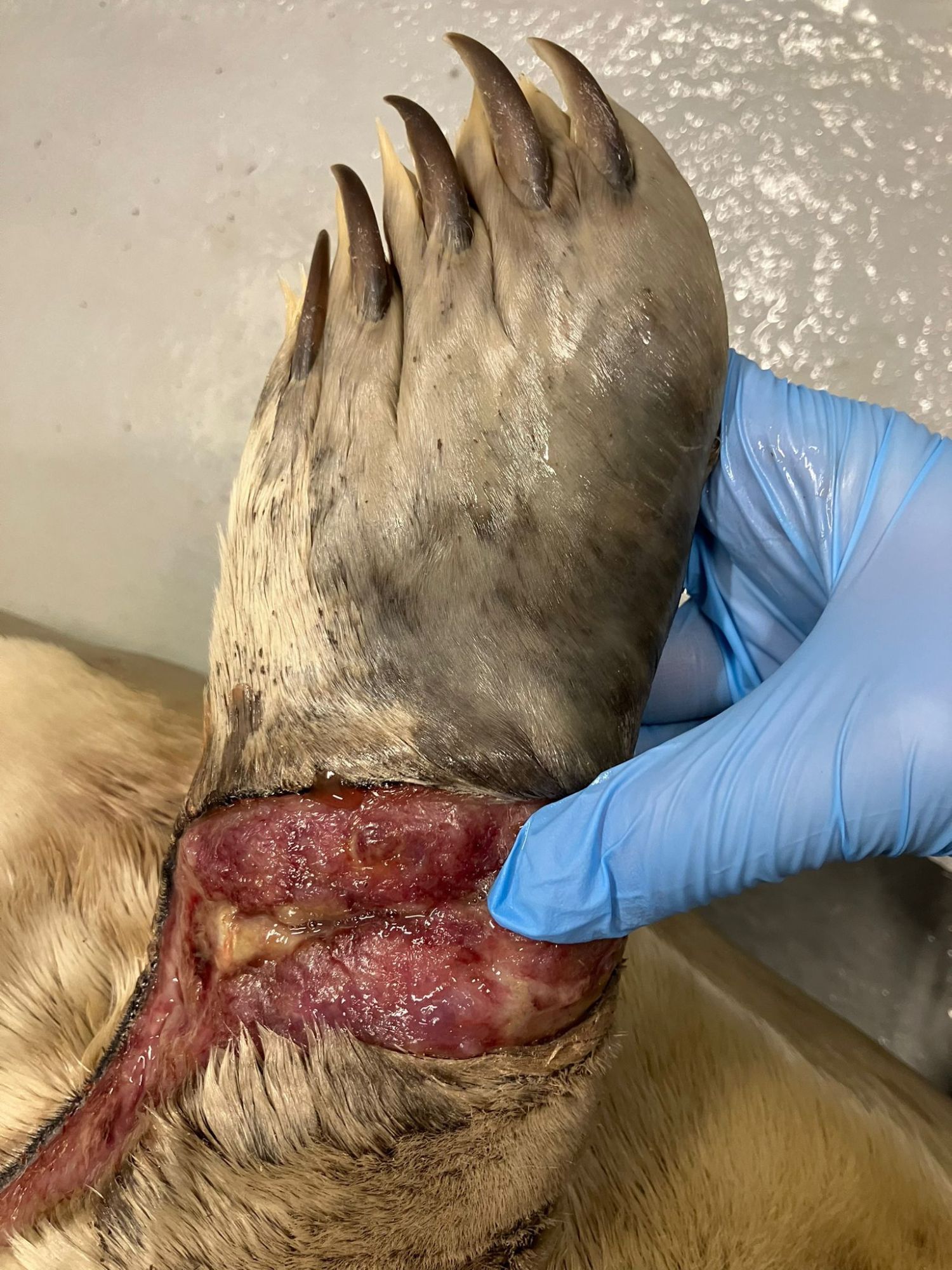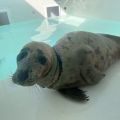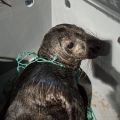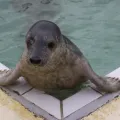Third entangled seal of the year in rehab
At the WEC (World Heritage Centre Wadden Sea), the new home of Seal Centre Pieterburen, a seal was taken in last week after becoming severely entangled in a fishing net. Although the net could be removed on the spot, the injuries were so serious that the animal had to be euthanised.
This once again highlights the impact human waste can have: it is the third seal this year to be admitted with such injuries. In March, Lucky was rescued—a young seal with a fishing net tightly wrapped around its neck. Thanks to prompt intervention and intensive care, he survived and was released a few days later. In April, grey seal Tangle was admitted, but his entanglement had left him so weakened that vets were unable to save him.
No chance of survival
For this third seal, named Kavga—Turkish for ‘fighter’—the situation initially appeared hopeful. Seal wardens on the island of Terschelling managed to cut the net loose but immediately noticed deep wounds on the animal’s front flippers. He was swiftly transported to Lauwersoog for further treatment.
Upon arrival, it became clear that Kavga had multiple severe injuries, including a deep gash that had penetrated the wrist joint of his left front flipper. The wound rapidly deteriorated, causing the joint to rupture completely beyond recovery.
The only possible treatment would have been to amputate the entire flipper. However, seals in the wild rely on both front flippers to survive, making amputation an unviable option. Euthanasia was therefore the only humane course of action.
A disturbing pattern
In less than half a year, three severely entangled seals have been admitted to the seal hospital—and these are just the animals that made it to a rescue centre. These are no longer isolated incidents, but signs of a worrying trend. The entanglements are a direct consequence of human pollution: fishing nets, ropes and other marine debris.
The impact on the animals is grave—many suffer severe injuries or do not survive. The Seal Response Team, a collaboration between three Dutch rescue centres, has reported a doubling in the number of entangled seal cases over the past year.
Raising awareness is the first step
The Seal Centre Pieterburen Foundation is calling for greater awareness of the impact human behaviour has on wild animals. Entanglement in fishing gear is a visible example, but human disturbance on beaches—by people and their dogs—also takes a toll.
In recent weeks, two seal pups have already been admitted due to human disturbance. When people are nearby, a mother seal may be too afraid to return to her pup, leaving it abandoned. Sick or weakened seals also sometimes lose the chance to rest and recover because they are approached or chased. In all of these cases, the animal ends up in care unnecessarily—disturbance that could often be easily avoided simply by keeping a respectful distance.
The public is therefore urged to always stay at least thirty metres away from a seal on the beach. Not sure if the animal needs help? Call one of the local rescue centres.
